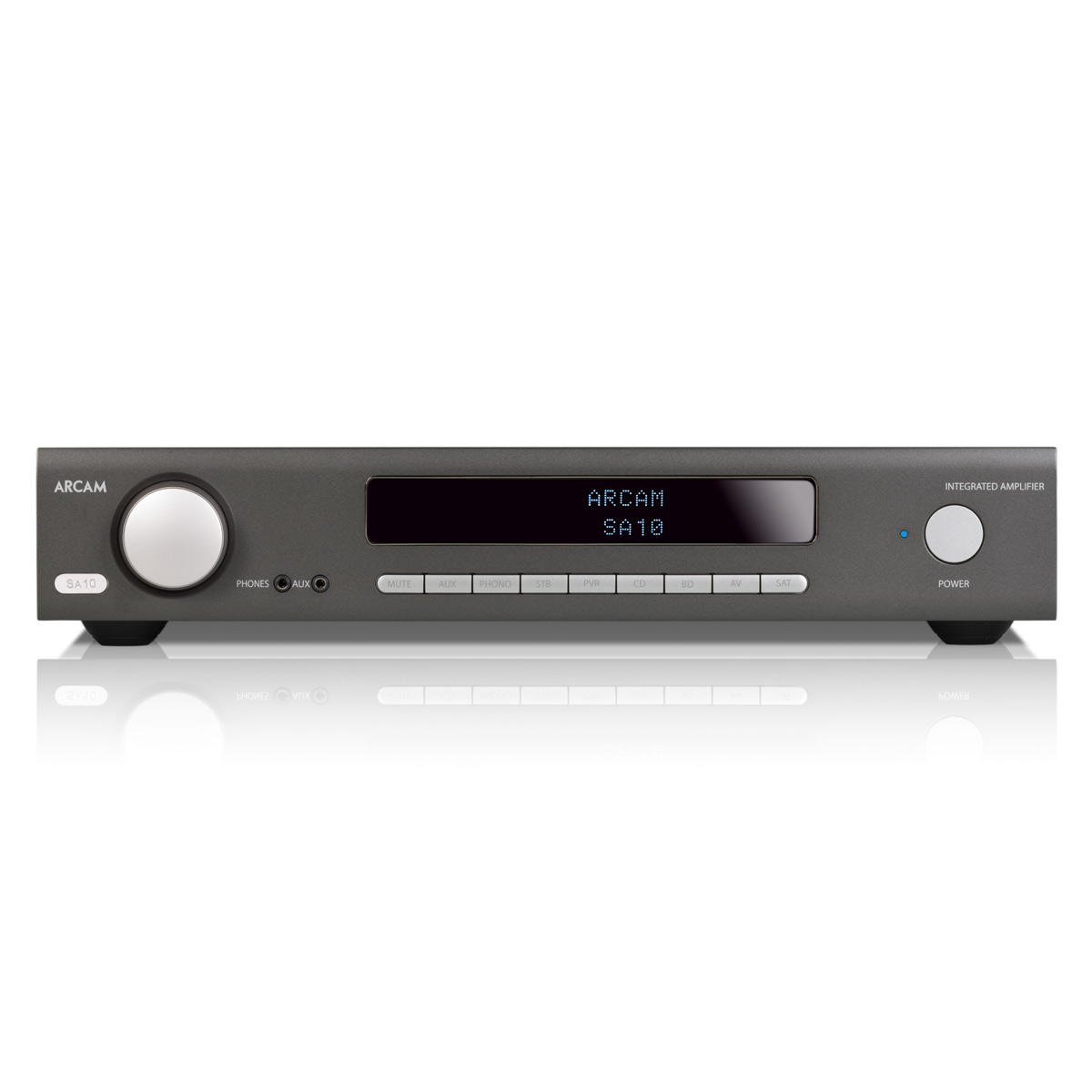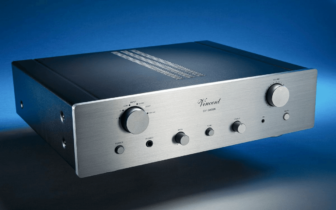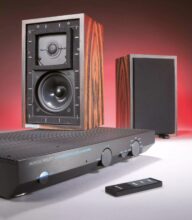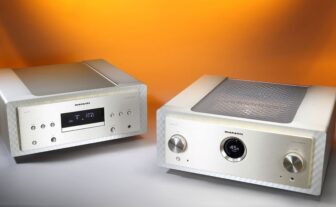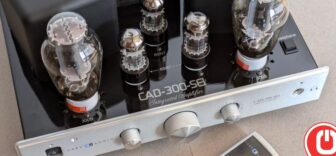Arcam SA10 Review – Family affair
The latest addition to Arcam’s new HDA range is the SA10 amplifier. Adam Smith finds out if it can score three goals in a row. Read our Arcam SA10 Review.
Completing Arcam’s trinity of new HDA products, the SA10 is the entry-level amplifier and I can’t help but detect a frisson of concern as you read this. After all, surely leaving its review until last is a sure-fire source of disappointment? It can’t be as good as its bigger brother, the SA20, right?
If I were to ask you to name a famous Pioneer turntable from the seventies and an equally well-known NAD amplifier from the eighties there is a good chance you’d say the PL12D and 3020. These audio icons tie into the SA10 simply because they were the base models in the manufacturer’s ranges. Both offered higher-spec models, but it was the entry-level ones that captured the public’s imagination.
The point is that you can’t judge an item solely on price, but only as a complete package. In this respect, the SA10 is off to a flying start, as it offers a similar feature count to its sibling. Present are five analogue inputs, including one for MM phono and one 3.5mm auxiliary input on the front, plus three digital inputs in optical and coaxial form. These feed a 32-bit ESS9016K2M Sabre DAC chip, with a slightly lower spec than the 9038 fitted to the SA20 (HFC 439).
The SA10 offers network and home automation control possibilities through Ethernet and RS232 ports but, once again, the USB is only for upgrades. The full complement of menu settings is available, including power-saving options, the ability to set an input as an A/V pass-through and various display and headphone connection alternatives.
At the rear there are four 4mm binding post loudspeaker sockets, although these are smaller and not
DETAILS
PRODUCT Arcam SA10
ORIGIN UK/China
TYPE Integrated amplifier
WEIGHT 8.4kg
DIMENSIONS (WxHxD) 433 x 87x 310mm
FEATURES
• Quoted power output: 2x 50W into 8ohm
• Inputs: MM phono; 3x analogue; 1x 3.5mm jack; 1x optical digital; 2x coaxial digital
DISTRIBUTOR Arcam UK
TELEPHONE 01223 203200
WEBSITE arcam.co.uk
shrouded like the SA20’s. The second main difference is to be found in the setup menu, where there are only three digital filter settings, rather than the five offered by the SA20.
Of course, the main changes are to be found internally, where the SA10’s 1.2kg weight deficit is accounted for by its simpler output stage. This is a conventional Class A/B type with a claimed 2 x 50W into 8ohm, which is plenty for driving most loudspeakers.
I decide to audition the SA10 with a Cambridge Audio 650C CD player and both PMC twenty.24 and Usher S520 loudspeakers. In addition, a Michell Gyro SE turntable with SME 309 arm and Ortofon 2M Black cartridge (HFC 434) is pressed into service for the MM phono input.
Sound quality
With the SA10 warmed up and ready to go, I am pleased to note a distinct family resemblance to the SA20. The SA10 has a composure and subtle ebullience that makes all kinds of music a pleasure to listen to. It is one of those designs that keeps you coming back for more and seems to have no particular affinity for any type of music over another. There is no need to agonise what to play next to explore the amplifier’s capabilities – it takes everything in its stride.
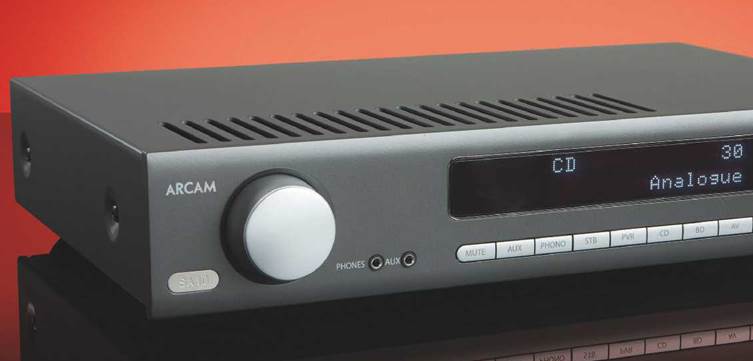
The main aspect of the house sound is to be found most obviously across the midband. The SA10 picks up on the innate nature of instruments, both acoustic and electronic, very well indeed. Guitar and violin strings have a pleasing sense of crispness and the Arcam has a fine dynamic range; the subtlest breath of air into a flute is as easy to pick up on as the strongest beat of a bass drum.
Vocals are also well defined with both a good sense of central image stability and depth perspective. Sarah McLachlan’s Angel sees her located solidly front and centre, and the SA10’s capabilities in dynamic terms
CONNECTIONS

- Optical and coaxial digital inputs
- 3x analogue inputs
- MM phono inputs and grounding post
- Preamp output
- Loudspeaker binding posts
mean it never sounds uncomfortable when she lets rip. In fact, the SA10 betters its sibling at maintaining its composure at higher volumes.
The bottom end is firm and weighty with good levels of detail, but through the PMC speakers I do detect that all is not quite perfect. While the SA10 is more than able to drive them, the bass takes on a slightly soporific quality. Timing is fine and instruments sound as they should, with double basses in particular exhibiting a pleasing chestiness. It’s just that it almost seems a little ‘disinterested’. Spinning up Mr. Scruff’s Get A Move On the SA10 plods along pleasantly enough, but without the real sense of gusto that this track should impart. Moving over to the smaller Usher
The subtlest breath of air into a flute is as easy to pick up as the strongest drum beat
standmount seems to help things here, but simply because it doesn’t go so low and so the expectation of a pounding dance bass line is lowered.
With initial listening taking place through the optical digital input, I elect to have a play with the digital filter settings and find them quite encouraging. On the positive side, they do have an effect, but this is subtle and so there is the risk you might find yourself swapping between to find the one that is conclusively the best – I know I do! After a break and a brew, I conclude that the Linear Phase, Fast Roll Off default option is the best all-rounder. Minimum Phase, Fast Roll-Off offers a little more dynamism for rockier material and helps to assuage the bass issues to a certain extent. Finally, Linear Phase, Slow Roll Off adds a degree of smoothness, but at the expense of some top-end detail. Ultimately, if you don’t get too drawn into trying to find a ‘winner’, each setting has its own merits and can usefully augment different types of material.
Moving to the analogue inputs, the SA10 continues to show a uniformity of performance. The designers have clearly voiced the inputs consistently as none stand out as being notably different to any of the others, which is a good thing. Ironically, given its digital leanings – with its three inputs and filter settings – it is the phono stage that turns out to be the star of the show. The fine midrange takes on an almost magical quality with the right material and there is a delicacy in the treble that belies the unit’s price. With a good MM cartridge, the SA10 sounds superb and really shows the format at its best.
Conclusion
There really is a great deal to like about the Arcam SA10. Its list of features and connectivity is hugely impressive and it is an alluring musical companion, particularly through the MM phono input. The only slight fly in the ointment is the low end, which can be rather ponderous at times, especially with larger speakers. Match it with a good pair of standmounts, though, and it sings its heart out.
When you purchase through links on our site, I may earn an affiliate commission. Here’s how it works.





